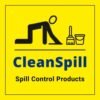FAQs
SinCos Automation Pvt. Ltd.
Freequently Asked Questions
What is a spill kit?
A spill kit is a ready-to-use emergency response solution designed to quickly and effectively clean up accidental liquid spills in the workplace. These kits typically contain a combination of absorbent materials, personal protective equipment (PPE), and disposal tools, allowing workers to respond to spills safely and efficiently.
Spill kits are crucial in maintaining a clean, safe, and compliant work environment, especially in industries handling oils, fuels, chemicals, or other potentially hazardous liquids.
What types of spill kits are available?
There are three primary types of spill kits, each tailored to specific substances:
- Maintenance Spill Kits: Designed for non-aggressive liquids such as water-based fluids, coolants, and mild detergents. Ideal for most industrial and commercial settings.
- Oil-Only Spill Kits: These are hydrophobic, meaning they repel water and absorb only hydrocarbons like oils, petrol, and diesel. Ideal for use around water or in outdoor environments.
- Chemical Spill Kits: Engineered to handle aggressive and hazardous substances such as acids, solvents, or caustic chemicals. Perfect for laboratories, chemical plants, and manufacturing facilities.
Each type of spill kit comes in various sizes and formats such as portable bags, wheeled bins, or stationary containers based on the needs of your site.
What should a spill kit contain?
A spill kit typically includes:
- Absorbent pads and rolls – to soak up spills quickly
- Absorbent socks or booms – to contain and prevent spills from spreading
- Disposal bags with ties – for safe removal of used materials
- Instruction sheet or spill response guide – to ensure proper use.
- Absorbent pillows– for larger or deeper spills.
- PPE – gloves, goggles, coveralls, and masks to protect responders.
- Optional extras – such as dustpans, shovels, floor signs, and drain covers
High-quality spill kits are well-organized and clearly labelled to ensure rapid response in emergencies.
When should a spill kit be used?
Spill kits should be used immediately after any liquid spill to contain, control, and clean the affected area. Delaying action increases the risk of:
- Slips, trips, and falls
- Environmental contamination
- Fire hazards (with flammable substances)
- Legal or regulatory non-compliance
- Damaged equipment or property
Having a spill kit nearby ensures you can tackle the incident before it escalates.
Who needs a spill kit?
Spill kits are essential for any organization that stores, uses, or transports liquids. Common sectors include:
- Warehouses and distribution centers
- Manufacturing and engineering
- Automotive and transport
- Construction and utilities
- Agriculture and farming
- Laboratories and educational institutions
If your workplace handles liquids of any kind, having a spill response plan and the right kit on hand is a regulatory and safety must.
How do I choose the right spill kit for my workplace?
Choosing the right spill kit involves evaluating:
- Type of liquids on-site– Are they oils, fuels, chemicals, or general-purpose fluids?
- Volume of potential spills– A small workshop may only need a 30L kit, while a large industrial site may require a 120L or even 240L capacity.
- Response time– Ensure kits are located close to high-risk areas to allow rapid deployment.
- Storage conditions– Choose portable kits for vehicles or outdoor-rated containers for external storage.
At SinCos (CleanSpill), we offer spill risk assessments to help you identify the most suitable solution. Please get in touch to find out more.
How many spill kits does my facility need?
There’s no one-size-fits-all answer. It depends on:
- Facility size and layout
- Number of spill-prone areas
- Types and quantities of liquids handled
- Staff shifts and access points
As a rule of thumb, each spill risk zone should have a dedicated kit within easy reach. For mobile operations, such as fleet vehicles or remote maintenance teams, portable spill kits are essential.
Do Absorbent spill kits expire or need maintenance?
While most absorbents don’t expire, spill kits should be inspected regularly, ideally every 3 to 6 months. Look for:
- Used or missing items
- Damaged or contaminated contents
- PPE integrity (e.g. gloves degrading over time)
- Clearly visible and labelled kit locations
Routine checks ensure your spill response is always ready and compliant with safety standards.
Do I need training to use a spill kit?
Yes. While kits are designed to be user-friendly, proper spill response training is essential for safe and effective use. Training covers:
- Assessing the situation and potential hazards
- Choosing the correct spill kit
- Wearing appropriate PPE
- Containing and cleaning the spill
- Safe disposal of used materials
At SinCos, we offer Spill Kit Training Courses to train employees on site and build employee confidence.
What else can help with spill response?
Visual management can make a huge difference.
Our:
- Wall-mounted Spill Stations.
- Safety Boards.
- Branded site signage
…help keep kits organized, visible and ready to use – while reinforcing safety awareness across your site.
It’s about turning ‘just in case’ into ‘always ready’.
WHY SORBENTS?
Visit here: Why Sorbents – Cleanspillkit.com

